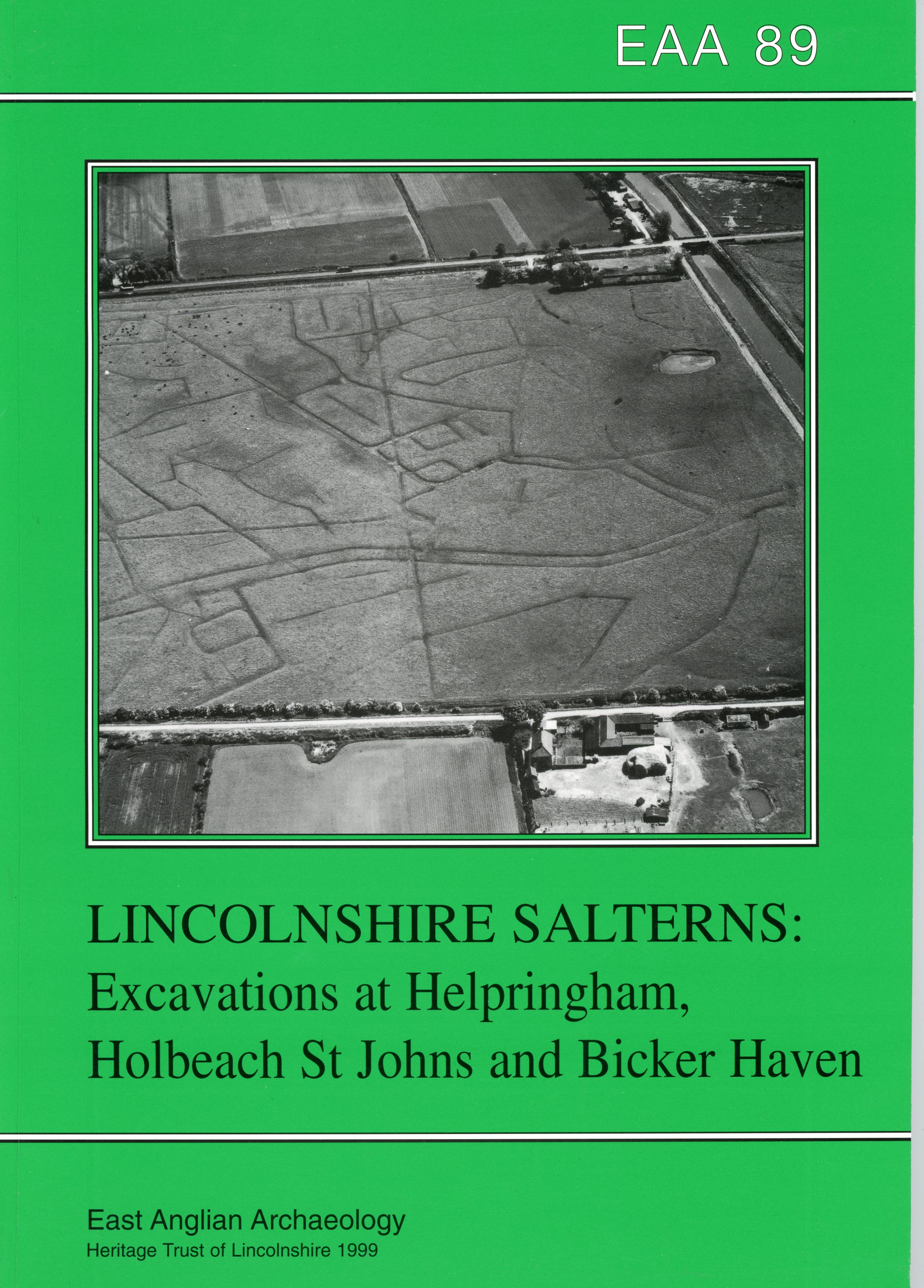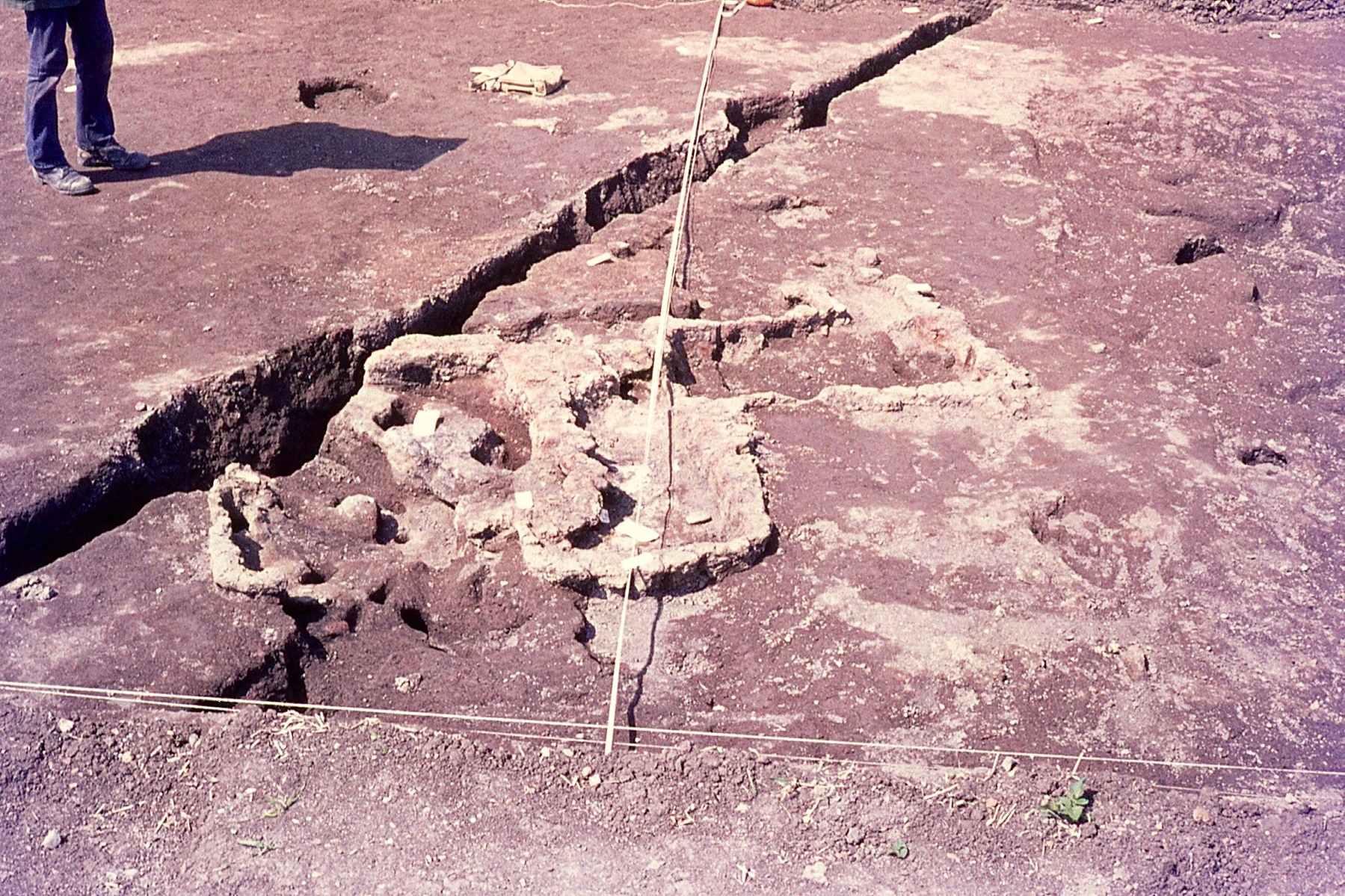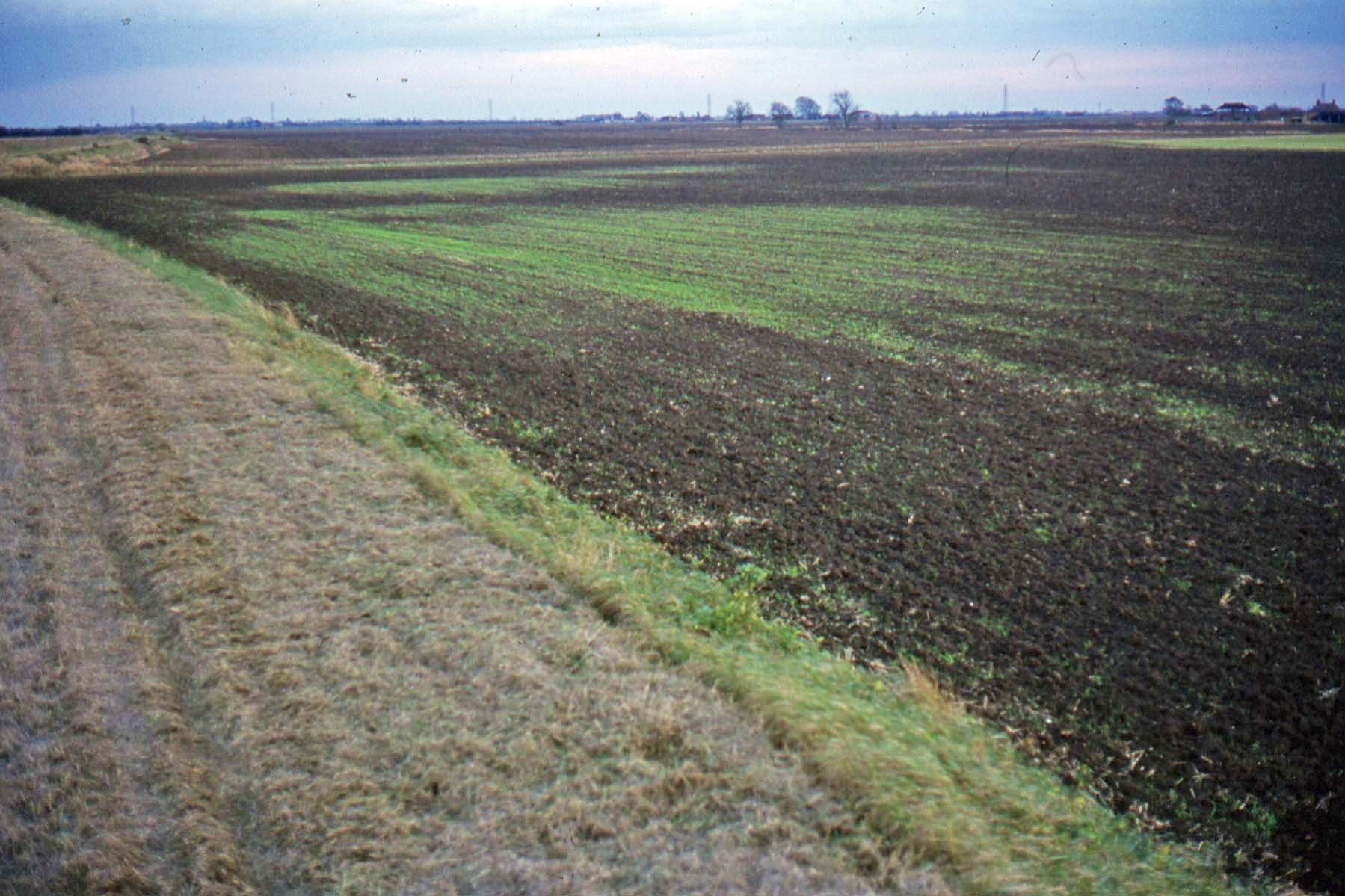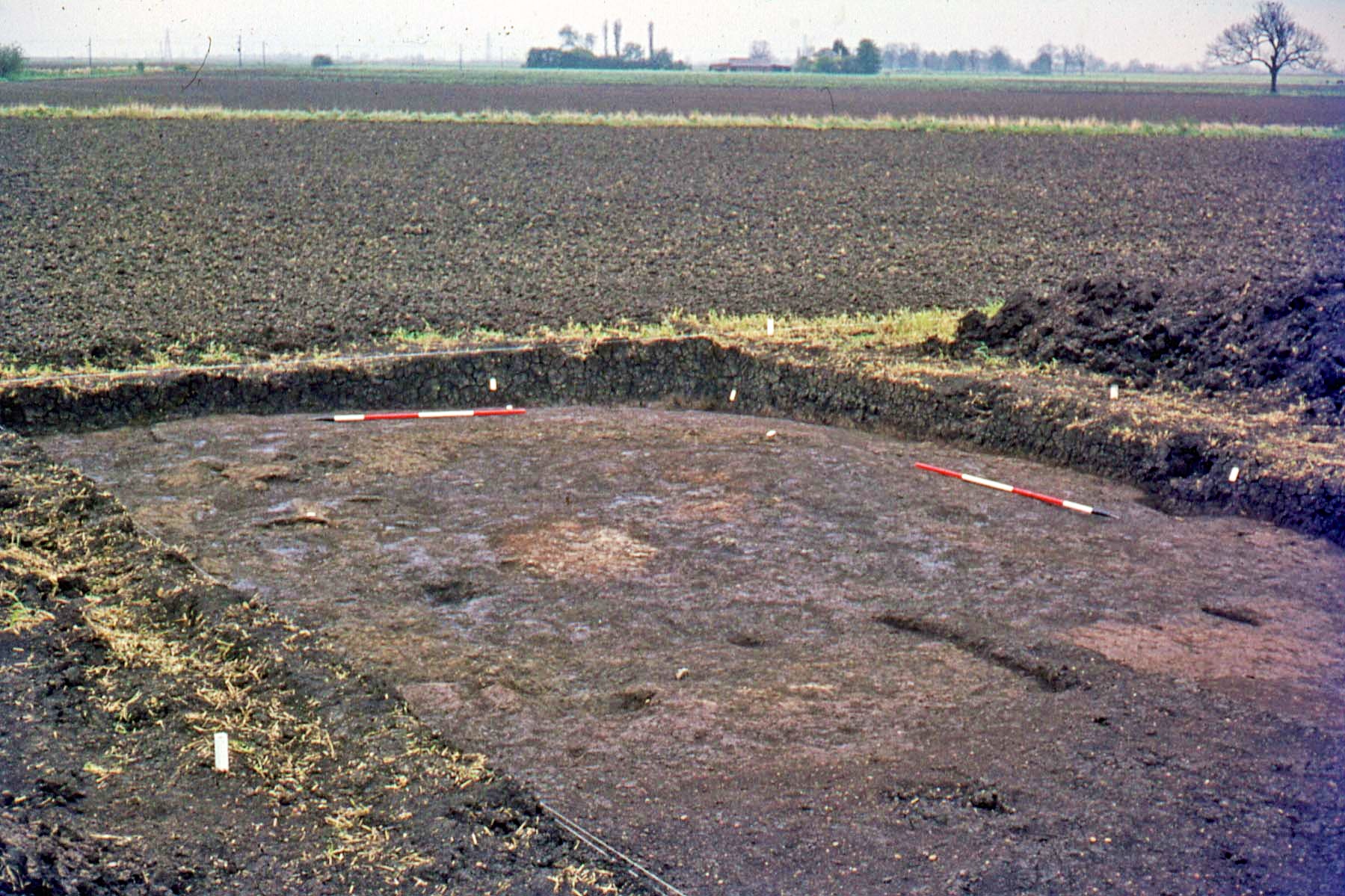 Field survey by the Car Dyke Research group in 1971 revealed evidence of salt-making in Helpringham Fen, Lincolnshire. The site, on the west bank of the Car Dyke, appeared to pre-date the Roman watercourse, which is thought to have been principally a catch water drain. Excavations in 1972 and 1974-5 exposed the fragmentary remains of a series of hearths set on low mounds and associated with Iron Age pottery dating from the third century BC to the end of the first century BC. A C14 determination of 379-116 cal BC was recorded for timber from one of the later hearths, and a less reliable date of 487-370 cal BC for a smaller charcoal sample. Plant remains suggested that the site was situated on the coastal margins, although adjacent to a tidal watercourse.
Field survey by the Car Dyke Research group in 1971 revealed evidence of salt-making in Helpringham Fen, Lincolnshire. The site, on the west bank of the Car Dyke, appeared to pre-date the Roman watercourse, which is thought to have been principally a catch water drain. Excavations in 1972 and 1974-5 exposed the fragmentary remains of a series of hearths set on low mounds and associated with Iron Age pottery dating from the third century BC to the end of the first century BC. A C14 determination of 379-116 cal BC was recorded for timber from one of the later hearths, and a less reliable date of 487-370 cal BC for a smaller charcoal sample. Plant remains suggested that the site was situated on the coastal margins, although adjacent to a tidal watercourse.
The site is envisaged as having been used for the manufacture of salt, and as being a predominantly industrial area. However, the presence of a quernstone and a considerable amount of pottery appear to indicate repeated, if not permanent, occupation of the site. The industry was operational in an open landscape close to the sea, such as an estuary with large tidal creeks, where both saltmarsh and mudflat were present; this would be consistent with the plant remains which show the presence of fresh and brackish as well as salt water. Conditions of freshwater fen nearby are confirmed by the presence of the sedge, Cladium mariscus and of alder, Alnus. Cladium has historically been an important species in the fenland economy, and as late as the nineteenth century was widely used for thatching. Alder was evidently used for fuel, but it is of course also an important species in this type of environment, since the wood can withstand waterlogging. It is ideal for such purposes as the manufacture of posts and stakes which are required in use on marshy or flooded ground. Oak was also present.
The evidence available from this relatively small excavation is limited but important for future Fen edge studies. The site appears to have been part of an industrial complex with which it is likely that other activities were associated at not too great a distance. These might have included other works necessary for salt production and animal husbandry as well as domestic buildings. The suggested date of activity on the excavated part of the site is in the middle of the third century BC. The presence of later Iron Age and Roman material in the upper levels implies some continuity of use of the area, but this cannot be proven. The bulk of the pottery found cannot be dated more closely than the third to first century BC, although examples of first century wheel-made forms are in the minority, only four sherds being stratified.


